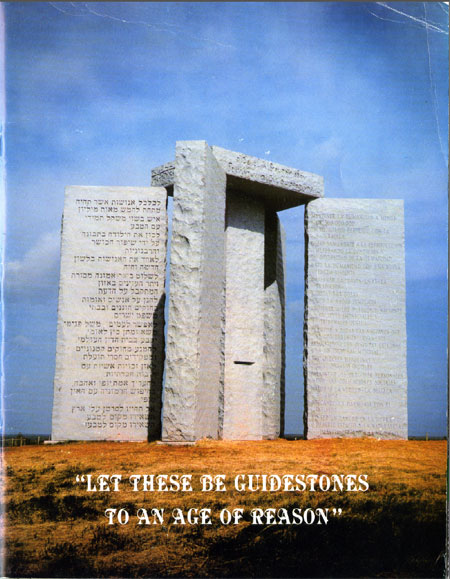December 9th, 2014
Composer Hiroya Miura has created “Lightmotif”: a musical soul-shaking for the new solar cycle as part of the Make Music Winter Festival. On December 21 in Long Island City brass musicians will march while playing a call-and-answer pattern following the path of the Long Island City Sundial. The musicians will march in a line tracing the shadow of the gnomon in different times of the day, while attentively tuning into the brightness of their surroundings and street sound. Join in as audience or participant (brass musicians welcome)–more information here.
Thanks to Hiroya Miura for this excellent celebration of the Solstice and the LIC Sundial!
September 9th, 2013
Artist Yuri Schwebler turns the Washington Monument into a sundial in the snow, c. 1974. Thanks to Natalie Campbell and Kristina Bilonick for the tip!
June 10th, 2013

November 17th, 2010
Photographer Chris McCaw tracks the movement of the sun across the sky with exposures ranging from about 2 to 8 hours in length with his home-built large-format cameras which use black and white print paper. The long, direct-sunlight exposures create positives–solarized images. And because the sun is so highly focused, the paper burns, leaving gashes and streaks across the images. See more on Chris McCaw’s website. Thanks to Casey Brandt for bringing to my attention!

Chris McCaw, Sunburned GSP#114(Arizona), 2007. 8″x10″ unique gelatin silver paper negative
private collection

Chris McCaw, Sunburned GSP#400(Pacific Ocean), 2009. 4-8″x10″ unique gelatin silver paper negatives.
private collection
June 21st, 2010
In the afternoon, the shadow of the Taipei 101 tower falls on a circular area of the adjoining Millennium Park, which acts as the face of a sundial (at the bottom of the image). More here on the symbolism of the Taipei 101 tower. Thanks Nicholas Fraser for the heads-up!

May 13th, 2009
The Georgia Guidestones are a huge stonehenge-like arrangement of granite slabs erected in the early 1980s for mysterious reasons; the persons who commissioned the stones are unknown. Carved into their sides are statements in several languages to be used, presumably, as societal directives in the context of some sort of post-apocalyptic future-a reboot disk for human civilization.


The statements ‘guides’ below were translated into: English, Russian, Mandarin Chinese, Arabic, Classical Hebrew, Swahili, Hindi and Spanish.

The above images are from The Georgia Guidestones Guidebook, published by Elberton Granite (complete book available via Wired, a 70mb PDF)
Further info:
Wired article by Randall Sullivan, 9 April 2009
April 30th, 2009
The Corpus Clock was invented and designed by Dr John Taylor who brought together in its creation an exception team of craftsmen, engineers and skilled technicians. The clock’s face is a rippling gold disc, about 5 feet diameter, and displays the time by opening individual slits in the clock face backlit with blue LEDs instead of hands.
The dominating feature of the clock is a sculpture of a devouring metal insect which looks like a grasshopper or locust. The sculpture is actually the clock’s escapement. Taylor calls this beast the Chronophage (literally “time eater”, from the Greek). It moves its mouth, appearing to “eat up” the seconds as they pass, and occasionally it “blinks”. The creature’s constant motion produces an eerie grinding sound that suits its task. The hour is tolled by the sound of a chain clanking into a small wooden coffin hidden in the back of the clock.
Below the clock is an inscription mundus transit et concupiscentia eius (“the world passeth away, and the lust thereof”).
Conceived as a work of public art, the Chronophage reminds viewers in a dramatic way of the inevitable passing of time. Taylor deliberately designed it to be “terrifying”: “Basically I view time as not on your side. He’ll eat up every minute of your life, and as soon as one has gone he’s salivating for the next.” Others have described it as “hypnotically beautiful and deeply disturbing”.
More info: YouTube video explaining clock, chronophage website, and conspiracy theorists.

November 18th, 2008
A new addition to the UVA school of architecture: a slot window in a stairwell that is shaped to catch the sun as it passes through the seasons. Â The angles of the window are tuned to the solstices. Thanks “William” Russell for the photo.

November 10th, 2008
This abstract is from ‘The Sundial Theme in My Environmental Art,” Mark L. Faverman, Leonardo, Vol. 10, No.3 (Summer, 1977), pp. 177-181
“The author points out that in ‘environmental art’ (also called ‘public art’) artists must take into account not only their individual artistic desires but also the reactions of the general public. He finds that he has accomplished this by means of his large-scale events that are based on the theme of the sundial. He hopes that the public, attraced by the funcitional character of the sundial, will obtain aethetic satisfaction from the artistic aspects of the events and also see the surrounding environments in a new way.
“He describes a number of sundial events that he has produced or propoed, some of which make use of exisiting city buildings and monuments as gnomons. He has also made sundial sculptures and proposed a design for a sundial fountain.”

November 2nd, 2008

New York Marathon at mile 15 around 11am – Marilson Gomes dos Santos of Brazil, who later won, is at right in yellow. Runners just came from gnomon along Crescent Street, which will be the path of the shadow later in the day at 2pm.










